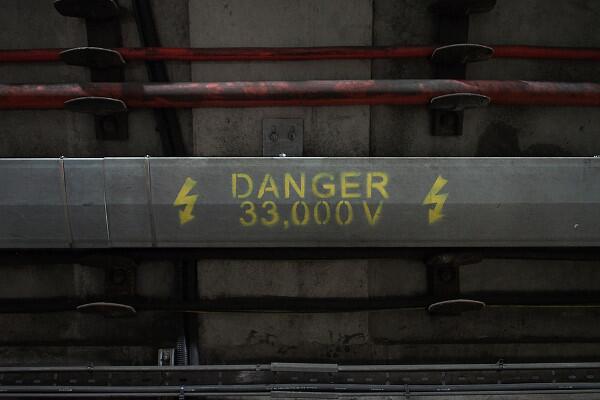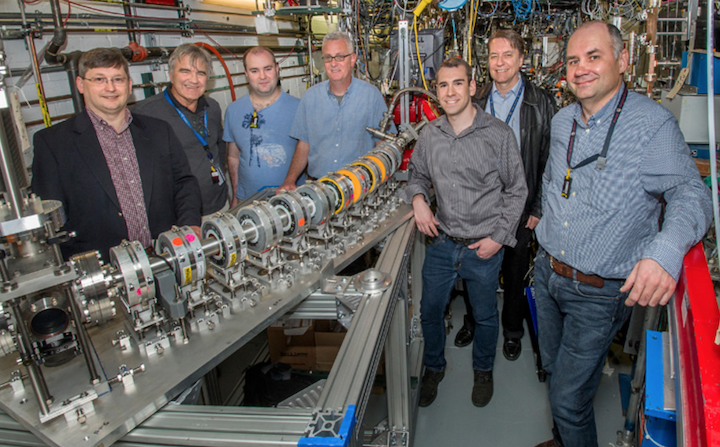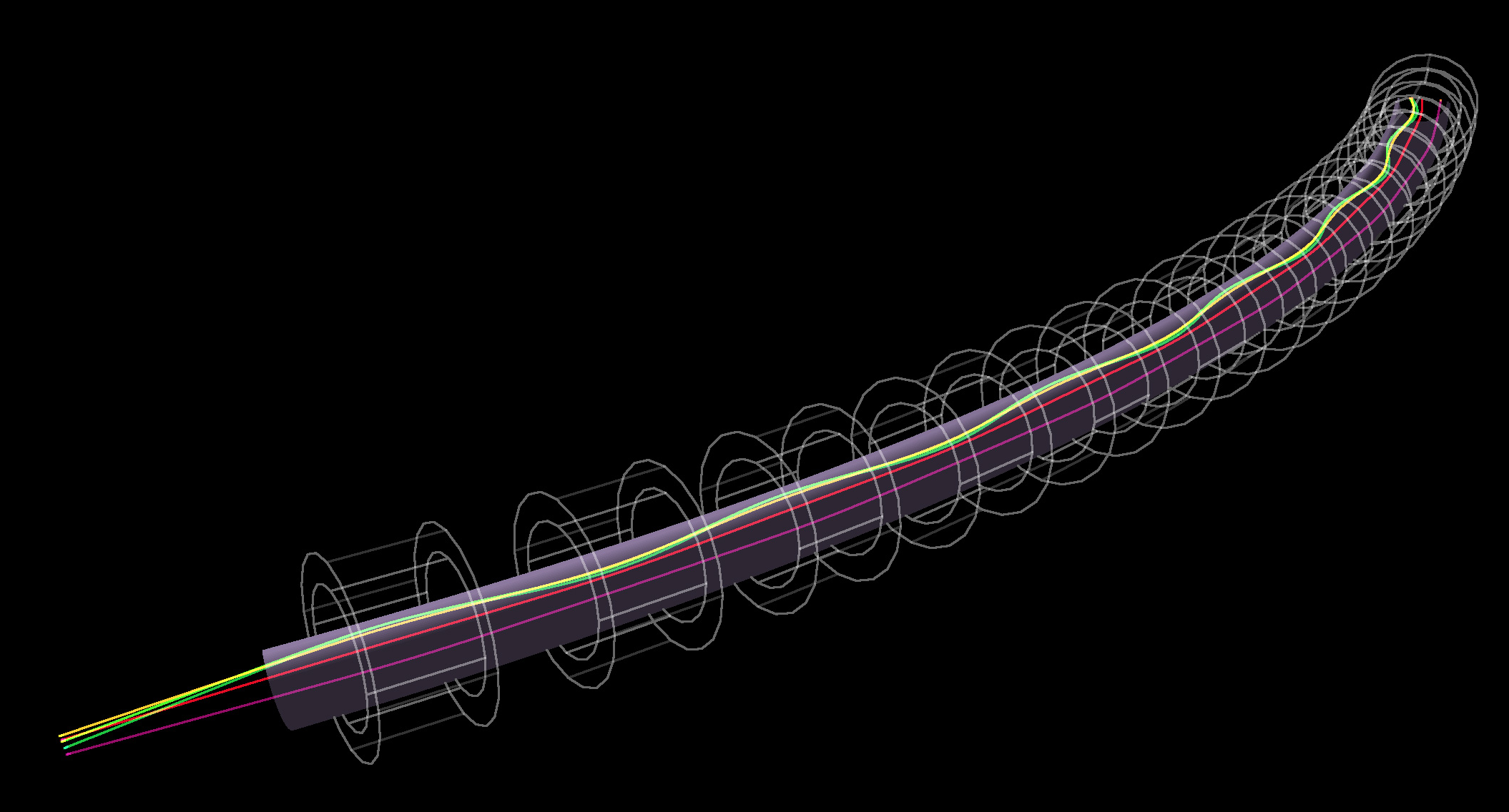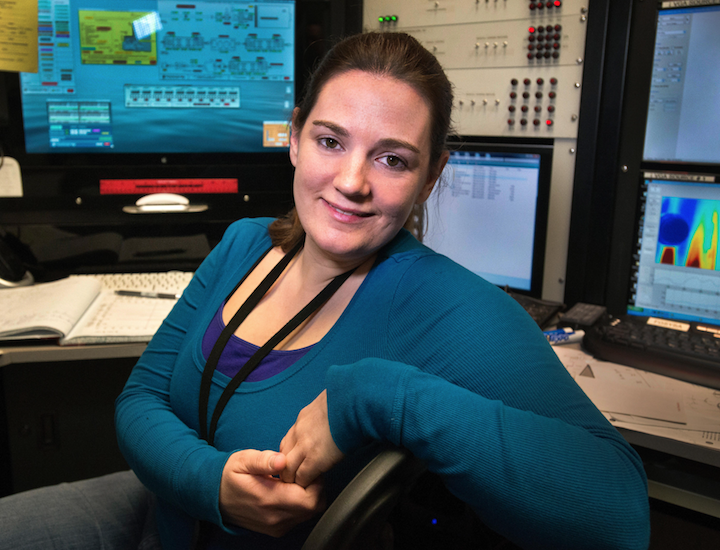Small Accelerator, Big Promise
Article By : Brookhaven Lab

Brookhaven Lab used a 3-D printer and permanent magnets to produce a proof-of-concept desktop electron-beam accelerator for physics research and cancer treatment.
LAKE WALES, Fla. — Today’s particle accelerators can be miles long, and even those used for cancer treatment can weigh as much as 50 tons. Now a team at Brookhaven National Lab has successfully built and tested a lightweight, tabletop-sized accelerator prototype that uses 3-D-printed beam frames to hold blocks of low-cost, fixed magnets. Novel software fine-tunes the magnetic field so that multiple beams can be channeled through a single beam pipe.

Brookhaven researchers proved the concept by directing five beams, with energies ranging from 18 million electron volts to 70-MeV, around the arced prototype (see illustration). The beams traveled distinct paths through the 2-inch-diameter beam pipe and emerged from the accelerator separated and ready for application in physics research and medicine. Brookhaven senior physicist Dejan Trbojevic, who holds several patents on designs for particle therapy gantries used to treat cancer, said the new accelerator could reduce the weight of such gantries from 50 tons to just 1 ton.
The 5-foot-long prototype puts a 3-D-printed frame around the 2-inch internal pipe through which the electrons flow. A second 3-D-printed circular frame surrounds the inner frame. A series of iron rods, precisely slid into slots on the outer frame, deflects the separate beams. Cleverly shaped permanent magnets vary their strength across different positions within each circular frame. Physicist Stephen Brooks, lead architect on the project, wrote the software that fine-tunes the accelerator’s deflection of the beams. Such fine-tuning in traditional accelerators is performed by precise control over electromagnets, but Brooks achieved the same functionality with fixed magnets at a fraction of the cost. Eliminating the need for precise electrical control over each beam would make accelerators modeled on the prototype cheaper to operate as well as to build.

Connecting the accelerator in a single loop allows electrons to be accelerated to progressively higher energy levels without having to use multiple loops, each dedicated to a particular energy level, as is traditionally required. Then new structure could be especially helpful for zapping tumors; each successive level in the loop would affect deeper tissues in the tumor than the level before it, thus holding the promise of destroying the tumor, top to bottom.
The tabletop accelerator could also expedite advances in physics research by putting instruments such as muon colliders, neutrino factories, and electron-ion colliders (EICs) in researcher’s own labs, freeing them from the need to book time of one of the large, electromagnet-controlled colliders. Brooks is working with physicists at Cornell University on a permanent-magnet architecture called the Cornell-Brookhaven ERL Test Accelerator (CBETA), which would increase the accelerator’s energy up to the electron volts required for an EIC. The New York State Energy Research and Development Authority is funding the project.

Previous attempts at Brookhaven National Lab to scale down accelerators used electromagnets, resulting in a room-sized accelerator that doubled the ratio between the highest and lowest energy beams — 3.5 times less than the new design.
George Mahler and Steven Trabocchi, engineers with Brookhaven’s Collider-Accelerator Department, helped Brooks assemble the new accelerator. Technician John Cintorino at the lab’s magnet division made the precise magnetic-field-strength measurements that helped Brooks and the engineers insert the 64 iron rods into the accelerator frames. (Brooks is currently working on a robot to take over the precise measurement and tedious placement of the iron-rods). Physicist Christina Swinson steered the beam through the Accelerator Test Facility (ATF) line designed by Brooks.
Subscribe to Newsletter
Test Qr code text s ss


